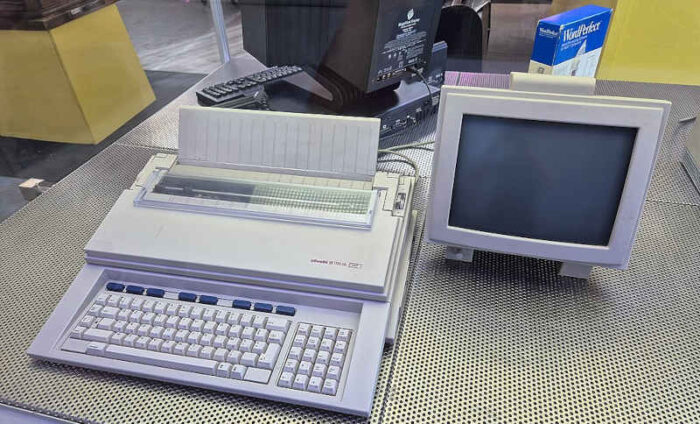As ODF 1.4 nears release, office suite developers and users alike can expect an open, transparent format designed to meet modern document needs.

OpenDocument Format for Office Applications, better known as simply ODF, is set for the official release of version 1.4 any day now. Actually, it’s already met all the approvals it’s going to need, so right now all we’re waiting for is for OASIS — or the Organization for the Advancement of Structured Information Standards — to proclaim it ready.
It’s already well on its way to replacing ODF 1.3, which has been the latest and greatest since April 2021. LibreOffice has already implemented the first drafts of the ODF 1.4 features in its latest versions.
If you’re wondering what ODF is, it’s the open, XML-based file format designed for saving and exchanging office documents such as word processing files, spreadsheets, presentations, charts, and graphics. It’s been around since 2005, started by Sun Microsystems as a file format for StarOffice. When StarOffice evolved into OpenOffice and later LibreOffice, ODF remained the standard and continued to be developed.
These days those apps continue to use it as their default format, as do other open source productivity suites such as Collabora Office and Calligra Suite. It’s also supported in most proprietary office apps, including Microsoft Office / 365, including ODF 1.4 in current releases, Google Docs, OnlyOffice, Gnumeric, and Zoho Office Suite.
It’s also included in a variety of mobile apps. With some it’s the default. With other, it’s an option.
The Importance of ODF
Serious question: what is the real reason why Microsoft could establish and maintain an almost total monopoly on desktop computers for decades?
The real reason — the one that too many open source advocates and tech journalists seem to completely miss — is not that the source code of Microsoft products is secret (not entirely, anyway). It’s the fact that the folks at Microsoft are the only people who know the full specification of their .doc, .xls and .ppt formats, and the only people who can make changes (which they do, in secret, just about every year to make their competitors’ implementation of their “standard” look incompetent.
If the specs of those formats were open — with the surety of no underhanded changes — nobody would care about Microsoft Office’s license (for the same reason why nobody ever cared about Microsoft Notepad’s license, since it only handles plain text files, which are an open standard).
If you don’t believe me, just ask the millions of people and organizations who would have happily switched to OpenOffice and Linux over the last twenty years or so, but never did because migration would have played havoc with their office files, and they weren’t informed enough about the huge difference between software and file formats.
The truth is that every time people:
- use open source software to produce or accept files in proprietary formats,
- blame LibreOffice because it’s not fully compatible with Microsoft .docx files instead of blaming Microsoft Office for mishandling LibreOffice files
- judge the quality of any office suite on how well it handles OOXML, Microsoft’s own “standard” format for office files,
they hurt themselves and legitimize Microsoft’s dominance, all for no reason. A real solution has been available for twenty years now, and it just got better.
What the Arrival of ODF 1.4 Means
To better understand how and why the release of ODF 1.4 is a big deal, I talked with some of the main contributors and advocates of ODF 1.4 and its main open source adopters LibreOffice and Collabora, by email.
“Standardization should not be a way to only describe the functionality of specific products,” said Thorsten Behrens, managing director of Collabora Productivity which makes LibreOffice available as an online platform. He added that ODF is a “really viable alternative to proprietary document formats because it offers true interoperability and a means for self-directed innovation, that returns both the agency and control of digital data back to their owners, without any vendor lock-in.”
Italo Vignoli, co-founder of The Document Foundation, which maintains LibreOffice, completely agrees: “ODF 1.4 safeguards digital sovereignty by removing a single company’s control over documents and returning it to the community. This allows the community to independently decide with whom and how to share content, preventing it from being analysed for commercial purposes and potentially shared without the knowledge of the legitimate owner.”
Summing up in my own words other comments from Behrens and the other ODF expers mentioned below, ODF is open source digital sovereignty done right, for three reasons:
- it does finally free users of office documents from vendor lock-in (as long as they start refusing files in other, proprietary formats of course!)
- it is developed in an open and inclusive way that makes it much easier to innovate, by anybody who can do it, instead of reducing innovation to a cover up for perpetual vendor lock-in
- ODF documents, which are just zipped archives of human-readable XML files and images, are really easy to generate or analyze for any purpose! Check out my ODF scripting posts to see what I mean!
Some ODF 1.4 Improvements
So, what’s all the fuss about? What’s included in this new version of the format that was lacking in ODF 1.3? For starters, improved standards.
“ODF 1.4 includes improvements for open standards in areas such as accessibility and better support for assistive technologies, added document formatting for pros, and advanced functionality across text documents, spreadsheets, and presentations,” explained Michael Stahl, senior software engineer at Collabora Productivity and a member of the OpenDocument Format for Office Applications Technical Committee.
The accessibility improvements are particularly interesting, both for practical and historical reasons. Back in 2007, one of Microsoft’s main arguments when sowing FUD against ODF was the claim that the format would be inaccessible to blind users. The main improvements of ODF 1.4 on that front are in how decorative shapes and table shapes are identified to screen readers.
For decorative shapes, LibreOffice, Collabora Online, or any other office automation software that supports ODF 1.4 documents, can mark any image, shape, or floating object as “decorative” In this way, that object will be ignored by screen readers, and in PDFs will be tagged as “artifacts,” which will have the same purpose as far as screen readers are concerned. This will make documents with “decorative” shapes much more readable for people with visual disabilities.
ODF 1.4 also brings in more accessibility improvements via clearer semantics and structural tags.
Other improvements in the new version include additional options for the placement of tables. In previous versions, tables could only be inserted into text boxes. Now, thanks to Miklos Vajna, senior software engineer at Collabora Productivity, users can place tables also inside any other shape that ODF can handle.
Three other interesting features that Vajna mentioned are:
- Overlap image prevention, which prevents images and shapes from overlapping with other images and shapes.
- Better support of numbered lists formats for non-Western languages.
- New written text direction support, to create paragraphs in Western languages rotated 90 degrees counter-clockwise.
Meanwhile, work for the next release is already ongoing. One of the most useful upcoming additions, according to Stahl, might be improved password-based document encryption. This feature, which is being developed by Germany’s Federal Office of Information Security, will make it possible to “encrypt the whole ODF 1.5 package at once, when previously it was only possible, depending on the ODF version, to encrypt every file entry in a package separately,” said Stahl
What to Do Now
The last thing Stahl told me was that the focus of 1.4 was “not on new features that contemporary office suite users haven’t seen before, but on improvements to bring ODF more in-line with current expectations.”
As far as I’m concerned, that’s also really great news. I’ve had enough of fake innovation that only serves its author’s interests. What matters is that ODF just got even more useful than it already was, and this makes it even harder to ignore.
It’s high time we reach the stage where nobody gets fired for demanding using only open formats for office files, at least when public interests and taxpayers money are involved. Everybody should ask their representatives and public administrators to only use such formats, and the release of ODF 1.4 is a perfect occasion to do it.

Marco Fioretti is an aspiring polymath and idealist without illusions based in Rome, Italy. Marco met Linux, Free as in Freedom Software, and the Web pre-1.0 back in the ’90s while working as an ASIC/FPGA designer in Italy, Sweden, and Silicon Valley. This led to tech writing, including but not limited to hundreds of Free/Open Source tutorials. Over time, this odd combination of experiences has made Marco think way too much about the intersection of tech, ethics, and common sense, turning him into an independent scholar of “Human/digital studies” who yearns for a world with less, but much better, much more open and much more sensible tech than we have today.







Be First to Comment